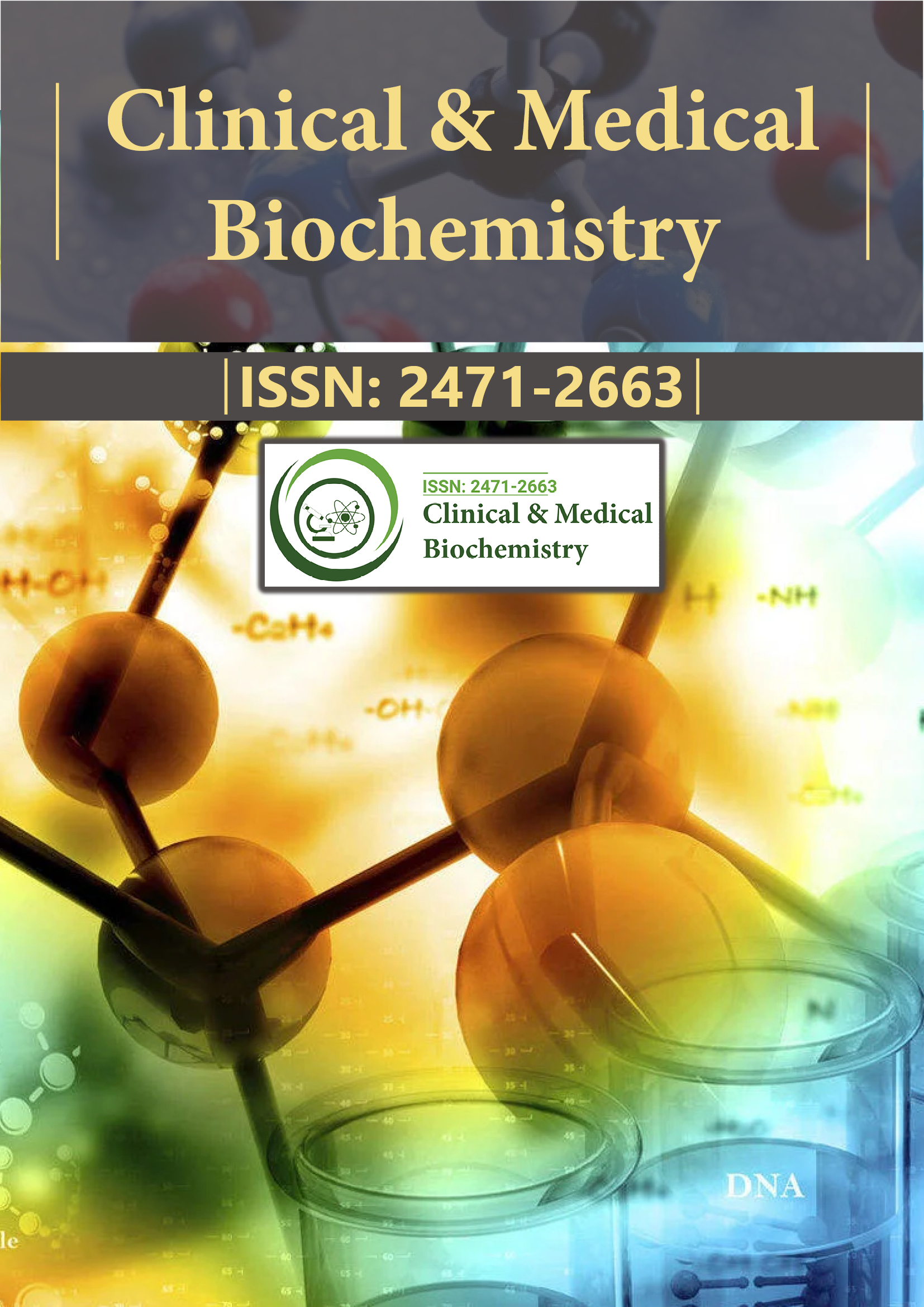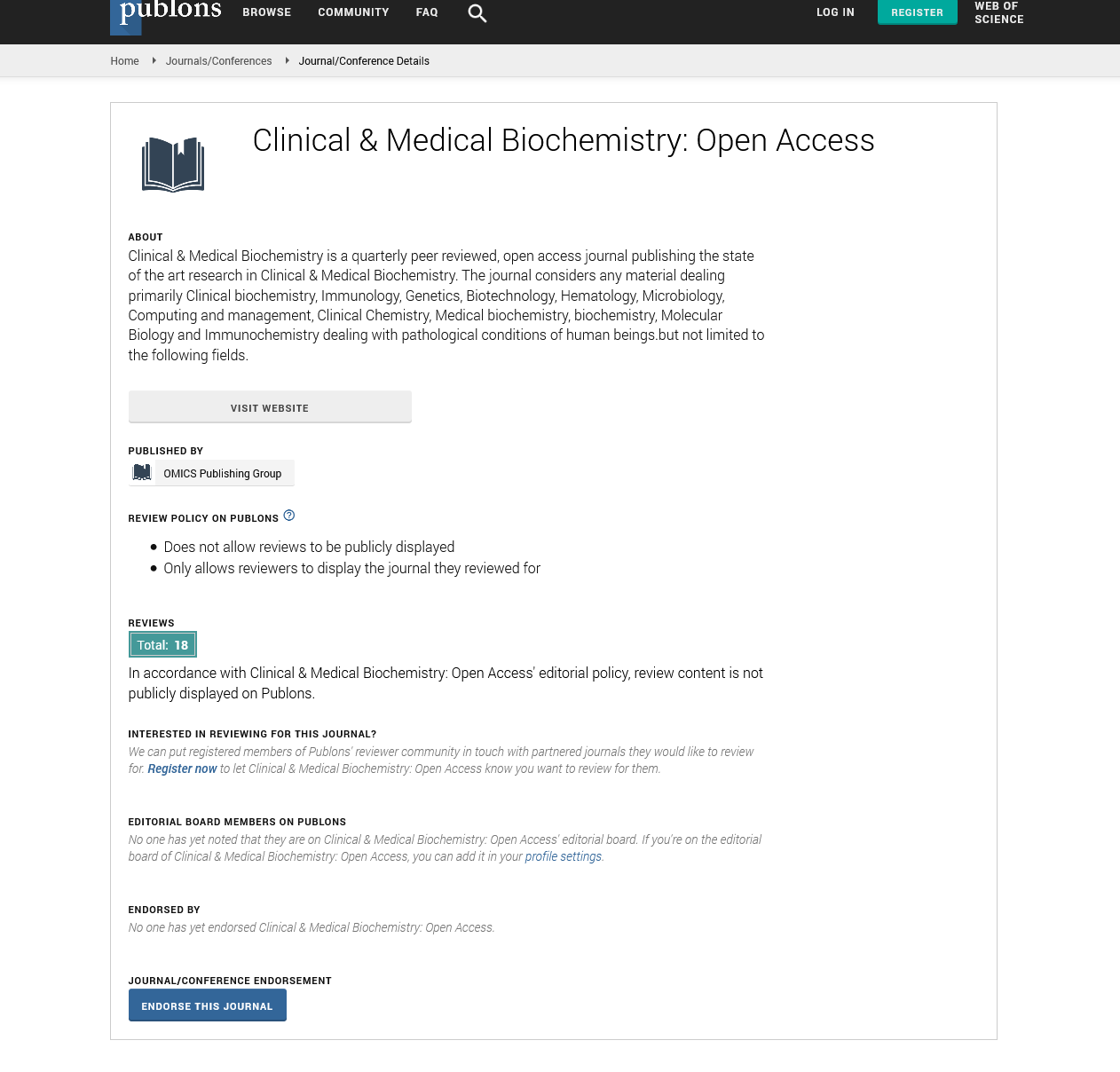Indexed In
- RefSeek
- Directory of Research Journal Indexing (DRJI)
- Hamdard University
- EBSCO A-Z
- OCLC- WorldCat
- Scholarsteer
- Publons
- Euro Pub
- Google Scholar
Useful Links
Share This Page
Journal Flyer

Open Access Journals
- Agri and Aquaculture
- Biochemistry
- Bioinformatics & Systems Biology
- Business & Management
- Chemistry
- Clinical Sciences
- Engineering
- Food & Nutrition
- General Science
- Genetics & Molecular Biology
- Immunology & Microbiology
- Medical Sciences
- Neuroscience & Psychology
- Nursing & Health Care
- Pharmaceutical Sciences
Opinion Article - (2025) Volume 11, Issue 2
Diagnostic Methods and Their Role in Modern Medicine, Accuracy, Technology, and Advancement
Christopher Helleiner*Received: 30-Apr-2025, Manuscript No. CMBO-25-29632; Editor assigned: 02-May-2025, Pre QC No. CMBO-25-29632; Reviewed: 16-May-2025, QC No. CMBO-25-29632; Revised: 23-May-2025, Manuscript No. CMBO-25-29632; Published: 30-May-2025, DOI: 10.35841/2471-2663.25.11.255
Description
Diagnostics form the cornerstone of modern medicine, enabling healthcare providers to detect, understand and monitor diseases in their earliest stages. The process of diagnosis involves the identification of a disease or condition based on a patient’s symptoms, medical history, physical examination and various tests. Diagnostic methods continue to evolve with advances in science and technology, leading to quicker, more accurate and less invasive approaches. Early and precise diagnosis can significantly improve treatment outcomes, reduce healthcare costs and prevent complications or disease progression. Diagnostics not only guide therapeutic decisions but also play an essential role in public health surveillance, screening programs and disease prevention strategies.
Imaging diagnostics involve the use of technology to create visual representations of the interior of the body. Techniques such as X-ray, ultrasound, Computed Tomography (CT), Magnetic Resonance Imaging (MRI) and Positron Emission Tomography (PET) allow clinicians to examine bones, tissues and organs noninvasively. Each imaging modality has specific applications; for instance, X-rays are commonly used for detecting fractures, while MRI is valuable in evaluating soft tissue injuries and neurological conditions. CT scans offer rapid, detailed images of internal organs and are frequently employed in emergency settings. PET scans, often combined with CT, help assess metabolic activity and are vital in oncology for staging cancers and monitoring treatment response.
Endoscopic diagnostics involve the use of instruments to directly visualize internal organs and obtain tissue samples for biopsy. Procedures like colonoscopy, gastroscopy and bronchoscopy allow clinicians to detect abnormalities, remove polyps, or diagnose infections and cancers of the gastrointestinal and respiratory tracts. Biopsy, the removal of tissue for microscopic examination, remains a gold standard in diagnosing many malignancies and inflammatory diseases. Histopathology and cytology, branches of pathology, analyze these tissues to determine the presence and nature of disease. Immunohistochemistry and molecular pathology further enhance diagnostic accuracy by identifying specific cell markers and genetic mutations.
Point-of-care testing has emerged as a transformative development in diagnostics by allowing rapid test results at or near the site of patient care. These include blood glucose meters, rapid antigen tests, urine dipsticks and portable coagulation analyzers. Point-of-care diagnostics are especially beneficial in emergency rooms, ambulatory settings, rural clinics and during outbreaks where timely decisions are critical. Home-based diagnostics are also gaining popularity, empowering patients to monitor chronic conditions such as diabetes and hypertension without needing to visit a clinic. These tools support personalized healthcare and promote patient engagement.
Diagnostic accuracy depends on several factors, including the quality of the specimen, the timing of the test, the sensitivity and specificity of the method and the interpretation of results. False positives and false negatives can lead to misdiagnosis, unnecessary treatments, or delayed interventions. Therefore, diagnostic tests must be chosen carefully and interpreted in the context of clinical findings. Combining multiple diagnostic approaches—known as integrated diagnostics—often yields the most reliable results. Artificial intelligence and machine learning are increasingly being incorporated into diagnostic tools to assist with image analysis, pattern recognition and predictive modeling, further enhancing accuracy and efficiency.
Diagnostics in screening are also essential in screening asymptomatic individuals for early disease detection and risk stratification. Screening programs for conditions such as breast cancer (mammography), cervical cancer (Pap smear), colorectal cancer (fecal occult blood test) and cardiovascular risk (cholesterol testing) help identify individuals who may benefit from early intervention. Genetic screening can identify carriers of hereditary diseases or individuals at high risk for developing certain conditions, enabling preventive measures or lifestyle modifications. Prenatal diagnostics, such as amniocentesis and non-invasive prenatal testing, allow for early detection of genetic abnormalities in fetuses, facilitating informed decision-making.
Infectious disease diagnostics are critical for identifying the causative organisms and determining the appropriate treatment. Rapid diagnostic tests for malaria, influenza, tuberculosis and hepatitis have greatly improved detection rates, especially in resource-limited settings. Antimicrobial susceptibility testing helps guide the selection of effective antibiotics and combats the growing threat of antibiotic resistance. Global health initiatives focus on strengthening diagnostic capacity in low- and middle-income countries to improve disease control and pandemic preparedness. The integration of mobile technology and digital health platforms has expanded access to diagnostics in remote regions, bridging healthcare gaps and improving outcomes.
Cost-effectiveness and accessibility of diagnostics remain important considerations. While high-end imaging and molecular tests offer precision, they may be limited by availability and affordability. Efforts are underway to develop low-cost, scalable diagnostic technologies that can be deployed in diverse healthcare environments. Public-private partnerships and international collaborations play a key role in advancing diagnostic innovation and ensuring equitable distribution. Regulatory oversight, quality assurance and continued professional training are necessary to maintain high standards in diagnostic services and minimize errors.
Conclusion
In conclusion, diagnostics are an indispensable component of healthcare that influence nearly every aspect of patient management, from screening and detection to monitoring and prognosis. Advances in technology, molecular biology and data science are reshaping the diagnostic landscape, enabling faster, more accurate and more accessible solutions. Ensuring the quality, affordability and availability of diagnostic tools is essential to achieving better health outcomes and advancing global health equity.
Citation: Helleiner C (2025). Diagnostic Methods and Their Role in Modern Medicine, Accuracy, Technology and Advancement. Clin Med Bio Chem. 11:255.
Copyright: © 2025 Havsteen C. This is an open-access article distributed under the terms of the Creative Commons Attribution License, which permits unrestricted use, distribution and reproduction in any medium, provided the original author and source are credited.

